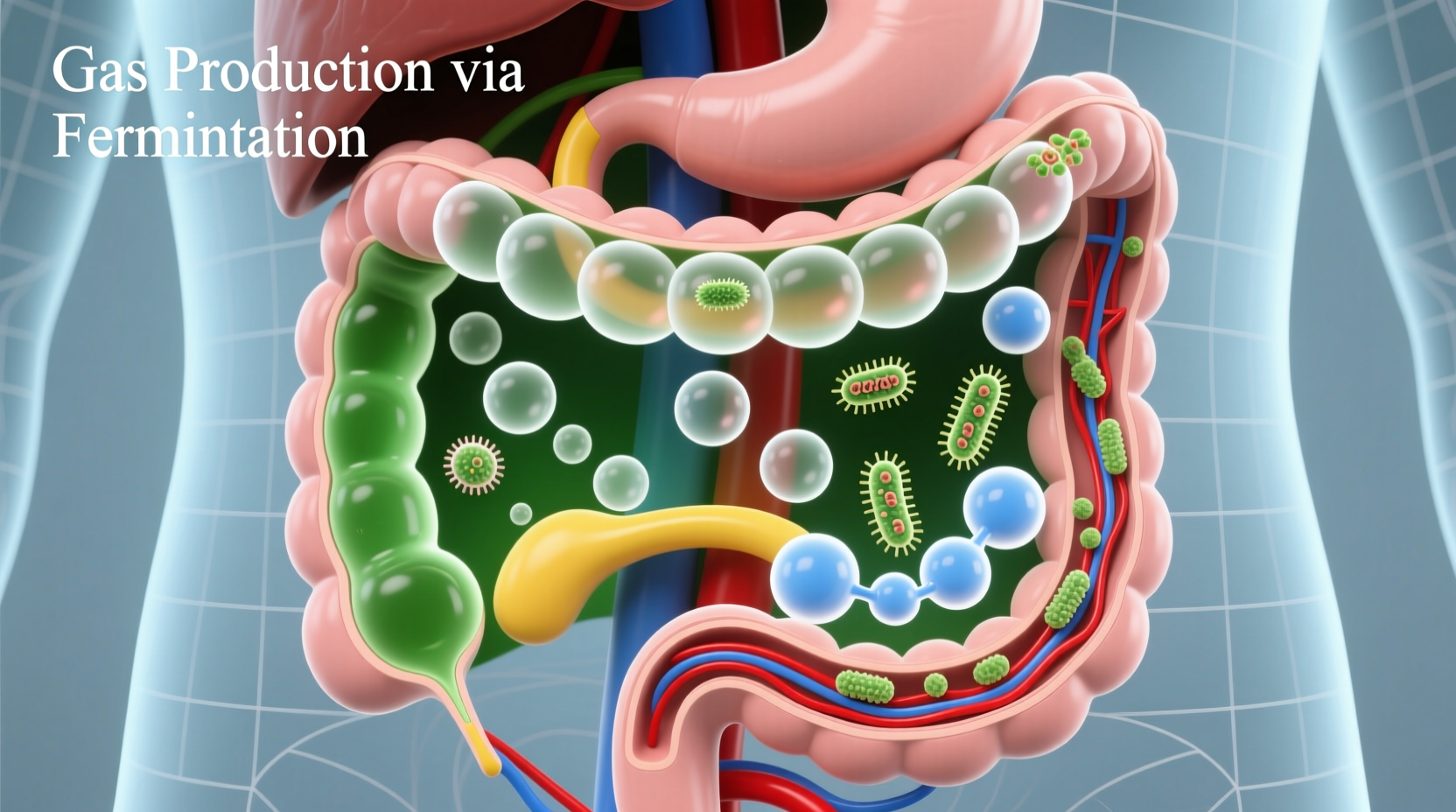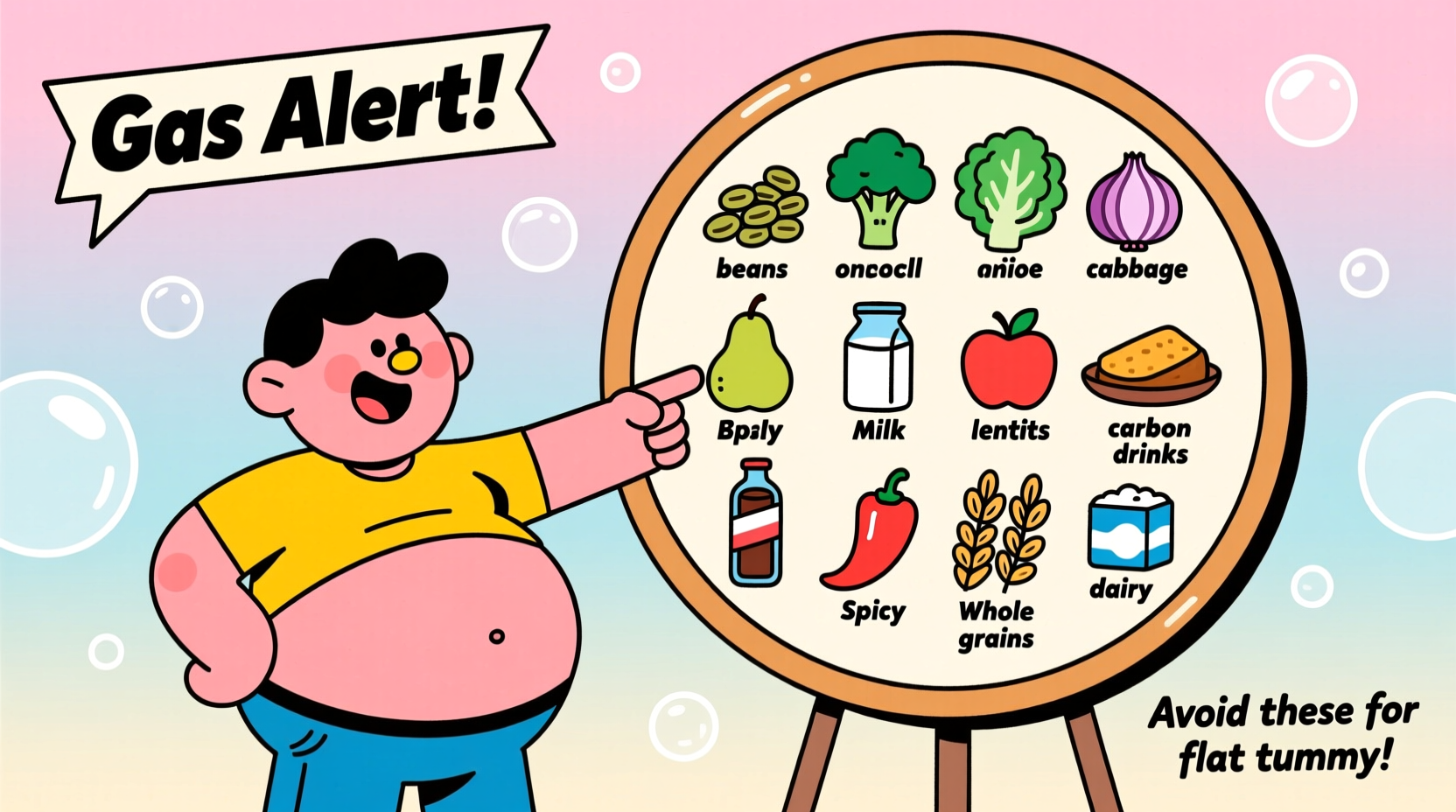Experiencing gas after eating is a normal part of digestion, but certain foods can trigger excessive bloating, discomfort, and flatulence. Understanding which foods commonly cause gas and why they affect your digestive system can help you make informed dietary choices without unnecessarily restricting your nutrition.
Why Do Certain Foods Cause Gas?
Gas forms during digestion when bacteria in your large intestine break down undigested carbohydrates through fermentation. While your small intestine digests most nutrients efficiently, some carbohydrates resist complete breakdown and reach the colon intact. Here's what happens:
- Carbohydrate resistance - Certain fibers, sugars, and starches aren't fully digested in the small intestine
- Colon fermentation - Gut bacteria ferment these undigested carbs, producing hydrogen, methane, and carbon dioxide
- Gas accumulation - This gas builds up until it's expelled through burping or flatulence
Individual tolerance varies significantly based on your unique gut microbiome composition, digestive enzyme levels, and overall digestive health.
Top Gas-Producing Foods and Why They Affect You
| Food Category | Specific Foods | Gas-Causing Component | Typical Onset Time |
|---|---|---|---|
| Legumes | Beans, lentils, chickpeas | Raffinose (complex sugar) | 6-8 hours |
| Cruciferous Vegetables | Broccoli, cauliflower, cabbage, Brussels sprouts | Raffinose and fiber | 4-6 hours |
| Dairy Products | Milk, ice cream, soft cheeses | Lactose (for lactose-intolerant) | 30 min - 2 hours |
| High-Fructose Fruits | Apples, pears, mangoes, watermelon | Sorbitol and fructose | 1-3 hours |
| Wheat & Grains | Bread, pasta, cereals | FODMAPs (fructans) | 4-6 hours |
| Sugar Substitutes | Sugar-free gum, candies | Sorbitol, mannitol, xylitol | 1-2 hours |
This evidence-based comparison comes from research published by the National Institute of Diabetes and Digestive and Kidney Diseases, which confirms these common gas-producing foods and their mechanisms.
Individual Variability in Food Tolerance
Not everyone experiences gas from the same foods. Your personal tolerance depends on several factors:
- Gut microbiome composition - Different bacterial strains process foods differently
- Enzyme production levels - People with lactase deficiency react strongly to dairy
- Digestive transit time - Faster digestion may reduce fermentation time
- Food combinations - Eating gas-producing foods with fats can slow digestion
- Portion size - Small amounts may be well-tolerated while large portions cause issues
According to a 2017 review in the Journal of Gastroenterology and Hepatology, approximately 65% of the global population has some degree of lactose intolerance, but prevalence varies dramatically by ethnicity—from 5% in Northern Europeans to over 90% in parts of Asia and Africa.

Practical Strategies to Reduce Gas Discomfort
You don't need to eliminate nutritious foods that cause gas. Try these evidence-based approaches:
Gradual Fiber Introduction
If increasing fiber intake, do so gradually over several weeks. A Harvard T.H. Chan School of Public Health study found that slowly increasing fiber allows your gut bacteria to adapt, reducing gas production over time.
Proper Food Preparation Techniques
- Soak and rinse beans - Soak dried beans for 8-12 hours, discard water, then cook in fresh water
- Cook vegetables thoroughly - Cooking breaks down some gas-producing fibers
- Try digestive enzymes - Products containing alpha-galactosidase (like Beano) can help digest raffinose
Dietary Pattern Adjustments
- Space out high-fiber meals - Avoid combining multiple gas-producing foods in one meal
- Chew thoroughly - Proper chewing reduces swallowed air and improves initial digestion
- Monitor portion sizes - Smaller servings of gas-producing foods may be well-tolerated
When Gas Signals a More Serious Condition
While occasional gas is normal, consult a healthcare provider if you experience:
- Sudden, severe changes in gas patterns
- Gas accompanied by unexplained weight loss
- Persistent diarrhea or constipation
- Bloody stools
- Nighttime symptoms disrupting sleep
These could indicate conditions like irritable bowel syndrome (IBS), inflammatory bowel disease (IBD), celiac disease, or other digestive disorders requiring medical attention.
Building Your Personal Gas-Trigger Profile
Create a food and symptom journal tracking:
- Foods consumed (including portion sizes)
- Timing of meals
- Gas symptoms (timing, severity, type)
- Other digestive symptoms
After 2-4 weeks, review your journal to identify personal triggers. This approach is more effective than blanket elimination diets, as research from the Monash University Department of Gastroenterology shows individual FODMAP tolerance varies significantly.
Conclusion: Balancing Nutrition and Comfort
Many gas-producing foods offer significant nutritional benefits that shouldn't be eliminated without cause. Beans provide plant-based protein and fiber, cruciferous vegetables contain cancer-fighting compounds, and dairy offers calcium and vitamin D. By understanding your personal tolerance levels and implementing strategic dietary adjustments, you can enjoy a varied, nutritious diet while minimizing uncomfortable gas symptoms.











 浙公网安备
33010002000092号
浙公网安备
33010002000092号 浙B2-20120091-4
浙B2-20120091-4